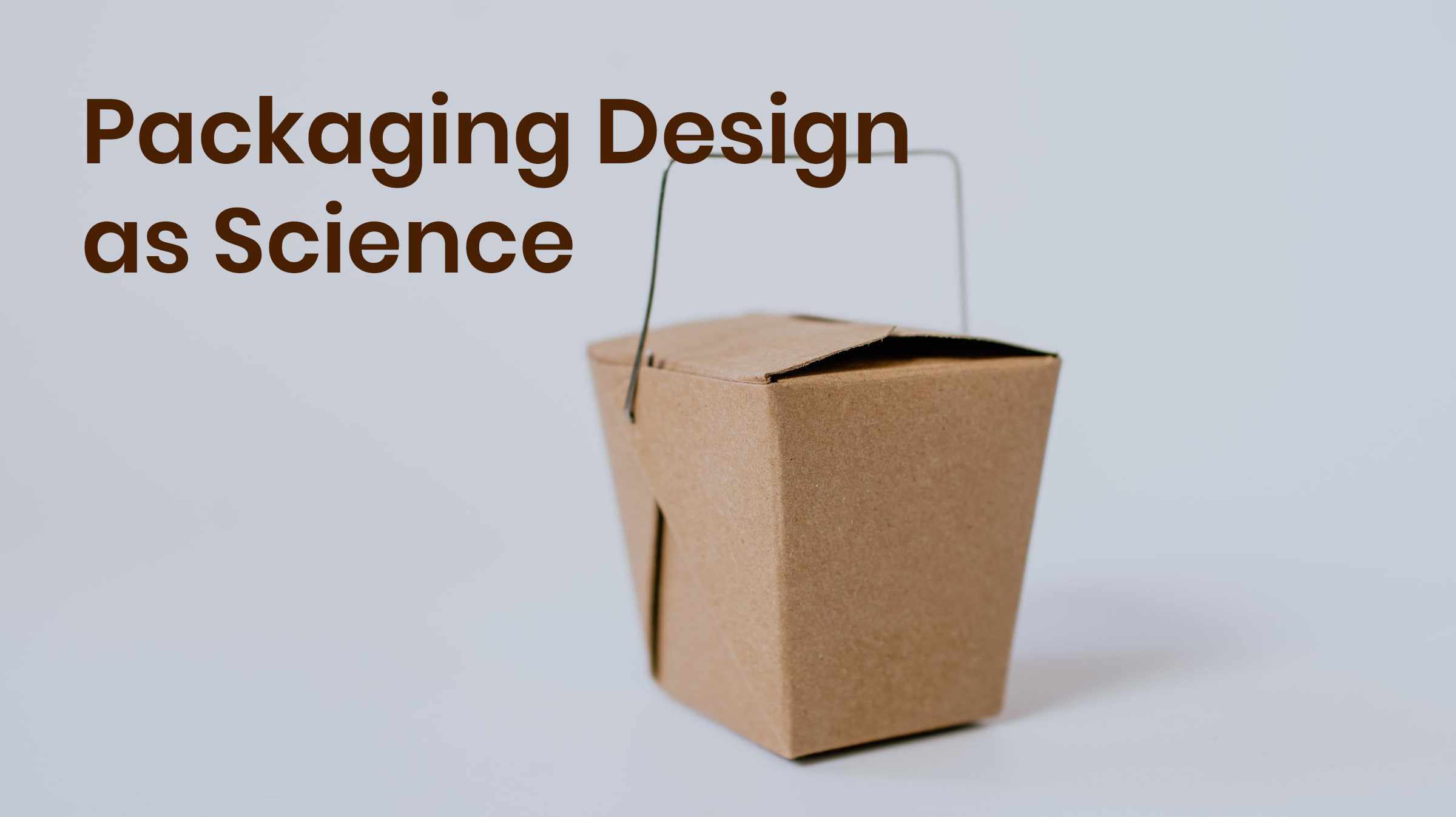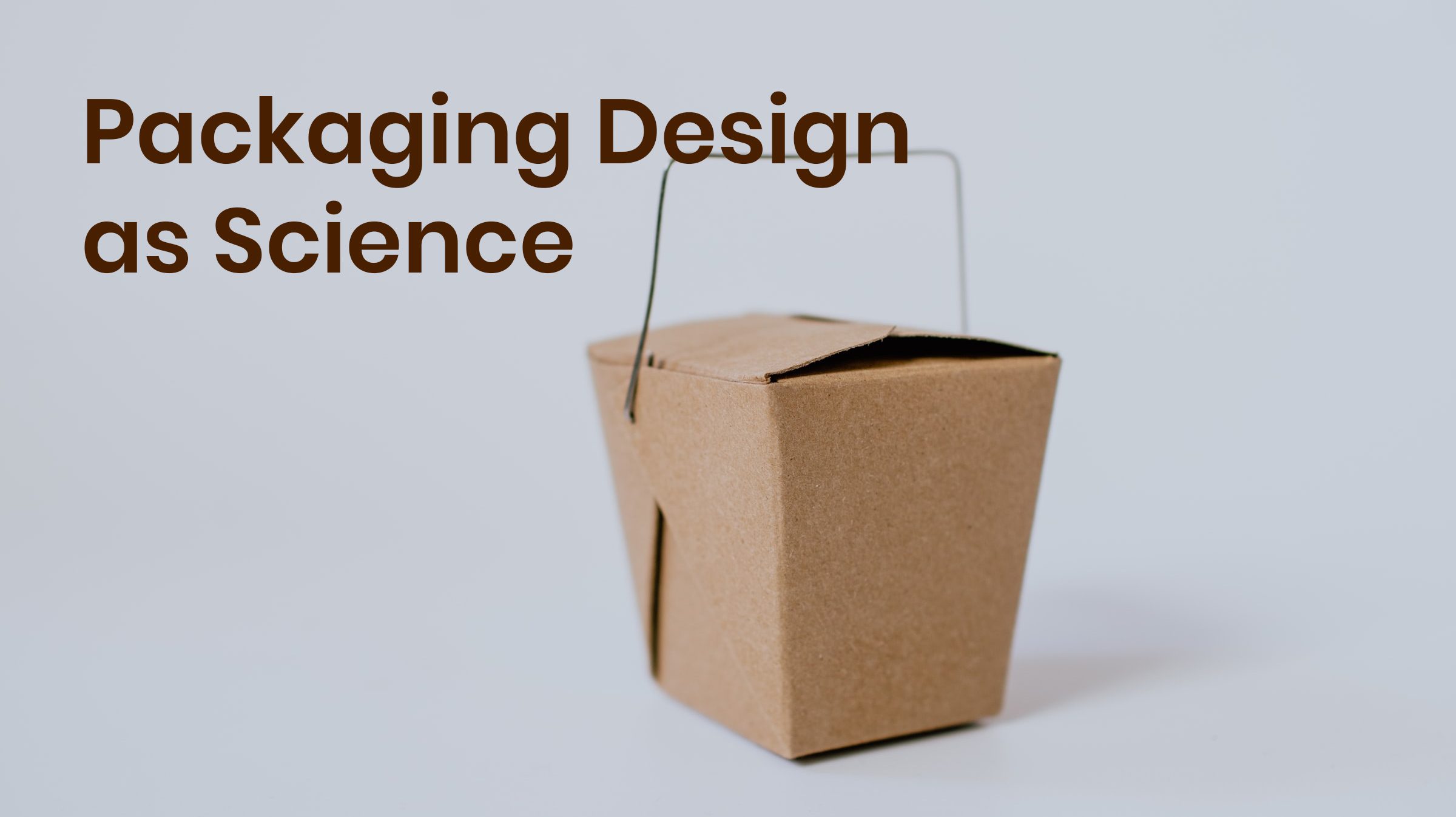I’ve heard a lot of criticism about the design choices made by different companies while releasing their products to the market. Nowadays, having a high-quality product in the box might be even less important than having a nice, eye-catching and appealing box, as when you “meet” the product for the first time – you see its packaging, but have no clue what’s inside of it.
Many products have sales less than their capable of, and some even disappear from the market due to lack of thinking done over the package prior to the release. A lot of people who are not working in the packaging field think that the packaging is pure creativity of the marketing departments and design agencies, however it’s not always true. Today, we want to share with you our conversation with Austin Schulte – Packaging Scientist at Package InSight and PackagingSchool.com.
Austin: I graduated from Clemson University in South Carolina where I studied everything from design of packaging to distribution of it, as well as material handling and converting. We really take a deep dive into all sorts of different aspects of what packaging is. Then, I had an internship for 7 months with Conagra Brands – a very large “Fortune 200” food company.
I’m currently working with Package InSight, which is a consumer market research company. I mostly work on the eye tracking and consumer market research side, but I’ve also been helping out hosting the events like the one we had recently – The Automotive Packaging Summit which helps connect OEMs and the automotive world with packaging suppliers. I’m also working at the packagingschool.com, which is an online educational resource, where you can take classes in your own time. It’s a four-base curriculum that teaches you pretty much everything. Some things available there are packaging management courses and certificates, as well as just basic courses in things such as the beverage or food materials, printing regulations, sustainability, stuff like that.
As far as I can remember, you reached out to me to talk about the design approval process.

Andrew: True, I think you are a perfect candidate for this conversation, because you know the problems in the sphere, and you also teach and communicate in the sphere a lot. Let’s start with something that might help those who are currently studying or getting ready to start their career. Here’s my first question:
You said that you were studying in the university – so how different, actually, is this studying from real life? I’ll explain my question: when I was in school and then went to the university I was told: “oh, forget about everything you know because we will dive deeply and things are really different from what you knew till that moment”. And after I graduated from the university and found my first job, I was told the same thing, like, “forget all you know, because things are different from what you learned in the university.” So the real life is different. How many surprises did you have? Did you face any difficulties that you weren’t prepared for by the university curriculum?
Austin: So, you know, obviously working on a business timeline versus university timeline is very different. What they are trying to teach us at the university is not necessarily just raw information but more of how to approach the problems we might face. So, when I entered the workplace, I felt very-very ready for everything. However, they can teach you as many terms and as much about an industry as they can, but with something as broad as packaging… Until you dive down into one specific area… For example, packaging for automotive is completely different from packaging for food, and some things we’ve been taught can be applied in the food packaging, and are very important in there. But the same things might have no meaning or sense for automotive. Of course, we had certain classes that gave us more understanding about distribution, but every industry, every sphere, has its specifics that you can’t be taught until you are a part of it. If that makes sense.
Andrew: Yeah, totally. What is your role working with packaging? Do you work directly with customers or do you manage some projects?
Austin: Yes, I work directly with customers, and yes, I do manage projects. I, kinda, wear a lot of hats – we are relatively a small company of 14 people. I have a lot of diversity in my everyday job. A lot of what I do, though, is communicating with current customers and potential clients, helping them to define the question that they want to ask. Because a lot of times people… since we mostly work in the food sector, when their sales are going down, people don’t really understand why because there is no data behind it. And they don’t really even know the right questions to ask about why something is not working the way they wanted it to. That’s when they need us. We sit down with them and say like, “Hey let’s dive into this; this is the product you want to look at, these are some potential areas we should focus on more”. I help them refine what they’re really trying to look for and then develop a study that looks at that specific question.
Andrew: Ok, and can you explain to me the overall process from starting the work with the potential client? So, let’s presume that I am your potential client, and I have some, I don’t know, cola drink, like Andrew Cola, going to the market. What will be the first step in communication? Just describe the process.
Austin: So, you have a product you want to take to market, and it’s a new sector for you and you’re worried that you’re not going to perform great. What we would do is we go out, and we run an initial analysis for you, just something base-like. We’ll go out and analyze the planogram of where that would sit, we will put together a small report, and we’ll send that back to you, just to kind of say: this is what this data looks like, and this is how it could be used. Then, after getting these materials, you would give us the questions. There’s always a lot of questions. After talking through that, we send out a proposal for what a full study would look like. Then, after discussions on the proposal, we’ll set up the study and one of the retail labs that we own and perform the study. Once the study is performed, we analyze the data, put it into a report. If a white paper is asked for, we put together a white paper, and then we present that report to the client’s team.
A lot of times, people use our studies at different shows, like trade shows, to show off their packaging. At that point, we kind of look back and see how much we improved it, what else we can improve, and we work with clients to see their other product lines where we can help.

Andrew: Ok, what about the exact packaging design moment? So, let’s say you did the research and you offered some solution that a shape should be the following. What is your review process actually? After you send your ideas, you probably have some kind of sketches?
Austin: We do have some designers in our team, but we do like to work with a customer’s specific design team, if they have one. We will come back and we’ll say: these design elements in your package are missing, we think you should draw more attention here, here, and here. And we kind of point those out in our report, and that will be like iteration A. Once we run through iteration A and we make these design suggestions, then we’ll send it to the design team to work on those suggestions. Once done, they’ll send it back to us, and we’ll run the second study and then report whether or not there was a beneficial outcome. As far as the approval on actual designs: approval process goes as many iterations as we need to, so the more you test and the more data you get, the more times you’ll have to go through and validate that design. So, it’s different than a typical design approval process where a designer will send it to a manager, and manager will prove or deny this design, and then it’ll go to a production making sure it sets on a timeline. For us – we go back and forth with them, helping them prototype and refine their design until we hit an iteration D or whenever they’re happy with their attention increase or their estimated sales increase. That’s kind of when we stop that and then they roll that into their production.
Andrew: And what is the way of sharing those ideas sketches and so on? Do you just get some verbal document saying “in this place I would suggest a change, the color change, font, or remove”. How the process is actually going from technical point of view? Do you communicate over the phone to discuss it or you just send the sketch via email waiting for their feedback?
Austin: We communicate with clients via email and then we’ll put together a slide deck – kinda like Google slides or PowerPoint presentation. We include all the design suggestions in there and then we’ll either meet in person depending on where they are located or make a conference call, and we’ll go through all the suggestions together. So, everything is working very collaboratively. I think that the best way to develop the design innovation is to work collaboratively. By being able to COMMUNICATE with them, not just simple sending them a report or presentation, but we always make sure to go through it together and talk through all the suggestions. And because until you run the next study there is no certainty behind those changes, we always want to run another study. If we want to make changes, we talk through those using PowerPoint and sketches, so it will take a picture of it on the graphics and we’ll draw arrows and say “hey, we want you to make these design changes” if they give us the art files. Sometimes we help to make adjustments that we think are needed, and we send that back to them so they could finish making the final touches, and we’ll send it to a printer and run a prototype run before printing them back on their shelves.
Andrew: how difficult is this process for you and for customers? You know, because being on one and the same page is an uneasy task, especially working with people from different countries, working in different spheres. You know, one and the same word might have a different meaning for them, especially if you are talking to marketing guys, not the design guys, or even some project manager or business manager who puts, you know, figures and numbers before everything. How difficult is this process for you, the communication?
Austin: I think it is a pretty easy process for us to communicate the changes we suggest. I think the only time we hit a point of struggle is when we tell somebody like a brand designer or brand owner that “hey, we know you’ve put a lot of effort into this design and into making it look the way it does. However, it’s not performing and it needs to be changed”. That’s something people don’t like to hear. It’s their project, they put all of their time and working efforts into it. They love the way it looks, and they think it should be the one performing best on the shelf. However, when we put the data behind it, we have to report to them and say, “hey, we know you really appreciate and like this design, but it needs to be improved”. So I’d say that the most difficult part of the conversation is making this connection. Also, winding up people’s schedules. Their brand owners have a different schedule than their design teams, and then we have to fit into both of their schedules. So, scheduling it and then also communicating to them where the issues are.
Andrew: I see. Are there any specific business tools, software that you’re using for managing the project? I’m not talking something to get the analytics, not analytical tool, but project management tool, I would say.
Austin: Yes, internally we use Trello, and we make lists of all the tasks that have to be done for that project. Then anyone that’s assigned to that project can go on the board and check off tasks that have been completed. The due dates and time lines and reminders can be set on there as well, and the way the book artboard is set up is to qualify the project. You know, our proposal has been sent out, “Hey, we need to do prototyping on this now”, or pre-tests were getting ready to test this project. And we’re actually testing it when it needs to be done to finish the testing when all goes into developing our presentation. So, it’s basically just an online checklist where we can go through and comment on each other’s progress in certain tasks and work collaboratively in that space.

Andrew: Is there anything that Trello is missing to become a perfect tool for you? Is there something that you would like it to have that you don’t have it in there?
Austin: It’s hard to say. I wish there was a way to link it to my Gmail, and if I could link emails, to have them locked and tracked with my progress on the Trello board. Like when I send a proposal, I wish I could attach that email in my Gmail to the Trello Board so I can go on the Trello board, click the proposal, and see everything that has all the conversation about that email. That proposal on that email chain will populate there. Does that make sense?
Andrew: Totally. And is there anything in your process you would like to improve with a help of the software?
Austin: give me just one second, I’ll think.
I guess we can go back to the Trello board. With how many emails we get every single day, all the different conversations and projects that I’m working on, it is hard to keep those separated. That’s what our Trello board is for – for being able to link the projects and the tasks on there with my email and for my team to be able to see my email as well. So, basically, kind of set up a blind copy or something, but they don’t have that capability, where I can send a blind copy email to that board and then it would be locked there. I think stuff like that would be very beneficial because then I can just go to that company on my board, click it, and then have all my emails and email chains involving that conversation.
Andrew: Got it. So can I try to outline one of the problems? You have trouble collecting information from multiple channels to one specific place and have this information available to your team. Would it be correct?
Austin: I would agree, yeah. Yes, so I have a question to you guys. You are mainly asking these questions about the design approval process and where your pains are in this process. Now, the reason you are asking these questions: are you guys trying to come up with information to talk about the design process, are you trying to create a new technology that makes this easier?
Andrew: Yeah, that’s our current task. We are a young startup that is trying to come up with the solution for approval process for creative teams. While developing our web-app, we always kept in our heads that we are working for creative people, for teams who want to spend more time CREATING, not processing processes and managing management. We concentrated on the issues happening during the communication between creative teams and their clients. For example, a problem with aggregating the information from multiple channels and having it in one place is something very typical, and I hear it like 3 times a day from different companies. We already have something to offer to solve this problem in our prototype, but we also want to hear how other people solve this issue. But we also want to create some kind of community, where creative people can share their problems and find the solutions together.
I want to thank you for your time, from our conversation I understood that we are doing a common thing – trying to help people to get a high-quality design faster. Our team is focused on streamlining the process from a technical point of view that allows you to get the results faster, while, the research that you and your team carry out helps to get a higher quality product that will achieve its purpose – becomes a hit on the market.
I truly hope that my conversation with Austin was as interesting for you as it was for me. We spent more than half an hour discussing different topics, and the text above is just highlights from our conversation. Feel free to reach out to our team if you want to share your experience with our blog readers, or if you would like to try our new version of Approval Studio (available only via invites). Don’t hesitate to contact Austin directly [email protected], if you feel that you can benefit from his company’s services and you need to put some science behind your packaging.

 TEAM SOLUTIONS
TEAM SOLUTIONS WORKFLOW SOLUTIONS
WORKFLOW SOLUTIONS



 REVIEW TOOL
REVIEW TOOL PROJECT MANAGEMENT
PROJECT MANAGEMENT TOOLS & INTEGRATIONS
TOOLS & INTEGRATIONS
 CLIENT INTERVIEWS
CLIENT INTERVIEWS









